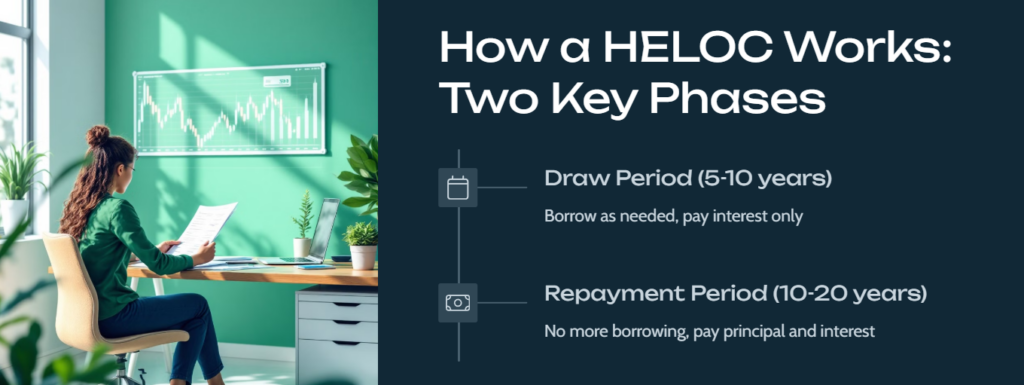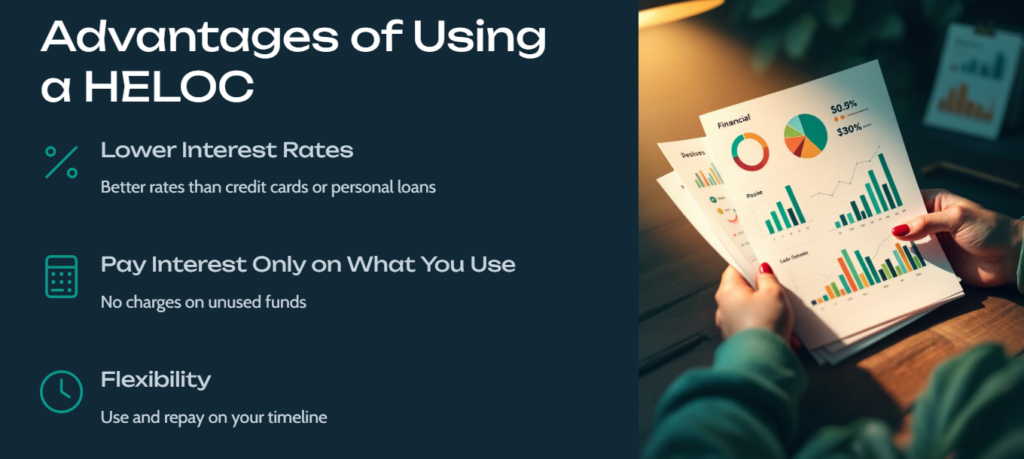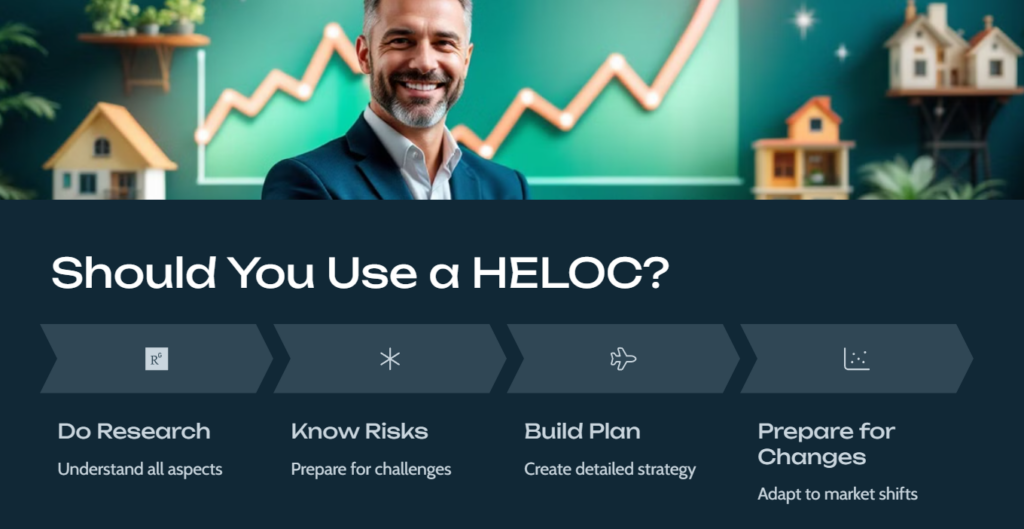If you’re a homeowner looking to expand your real estate portfolio, a Home Equity Line of Credit (HELOC) can be one of the most flexible and affordable tools to tap into. But while HELOCs offer opportunity, they also come with risks and complexities that you must understand before using them as leverage.
In this guide, we’ll break down:
✅ What a HELOC is
✅ How it works
✅ Its pros and cons
✅ How to use a HELOC wisely in real estate investment
✅ Key pitfalls to avoid
What Is a HELOC?
A HELOC (Home Equity Line of Credit) is a revolving credit line secured by the equity in your home. It functions like a credit card—you get approved for a certain credit limit, and you can borrow from it as needed, repay it, and borrow again during the “draw period.”
How Is Your HELOC Limit Determined?
Most lenders allow you to borrow up to 85% of your home’s appraised value, minus what you still owe on your mortgage.
📌 Example Calculation:
- Home value: $400,000
- Mortgage balance: $250,000
- 85% of home value: $340,000
- Maximum HELOC: $340,000 – $250,000 = $90,000
This means you could potentially access $90,000 in revolving credit without selling your home or refinancing your mortgage.

How a HELOC Works: Two Key Phases
🔹 Draw Period (typically 5–10 years):
- You can borrow as needed up to your credit limit.
- You pay interest only on the amount borrowed.
- Repay and re-borrow freely within the draw period.
🔹 Repayment Period (typically 10–20 years):
- You can no longer borrow from the credit line.
- You start repaying both principal and interest.
- Monthly payments increase during this period.
📌 Note: HELOC interest rates are usually variable, meaning your interest cost can change over time.

Why Use a HELOC for Real Estate Investing?
A HELOC is popular among real estate investors because it gives them flexible capital to fund deals without having to liquidate assets or apply for traditional loans.
🔑 Top Investment Uses for HELOC Funds
- Down payment on a new investment property 🏘️
- Renovation and repair projects to increase property value 🔨
- Bridge financing while flipping houses or waiting for loan approval 💵
- Emergency reserve fund for unexpected expenses (roof repair, vacancy) 🚨
- Buy distressed properties for cash (quick close deals) 💰

Advantages of Using a HELOC
| Advantage | Description |
|---|---|
| Lower Interest Rates | HELOCs typically have lower rates than credit cards or personal loans. |
| Pay Interest Only on What You Use | No interest charges on unused funds. |
| Flexibility | Use funds as needed and repay on your own timeline during the draw period. |
| Access to Capital Without Selling Assets | Keeps your investment properties intact while freeing up capital. |
| Potential Tax Benefits | Interest may be deductible if the funds are used for property improvements (consult a tax advisor). |

Risks and Things to Watch Out For
| Risk | Explanation |
|---|---|
| Your Home Is on the Line | Defaulting on HELOC payments can result in foreclosure. |
| Variable Interest Rates | Rates can rise unexpectedly, increasing your repayment burden. |
| Temptation to Overspend | Easy access to credit can lead to poor investment decisions. |
| Repayment Shock | When the draw period ends, payments rise sharply due to principal repayment. |
| Declining Property Values | If your home value drops, your equity (and HELOC room) decreases. |
📌 Tip: Never borrow more than you can repay—even if you “expect” a deal to yield profit.

When Is a HELOC a Smart Move for Investors?
✅ You have significant equity in your primary residence
✅ You have a strong credit score and stable income
✅ You have a clear plan for using the funds (e.g., renovation, cash-flow property)
✅ You understand the loan terms, repayment timeline, and risks
✅ You have exit strategies or contingency plans

Investor Tips for Using HELOC Wisely
- Treat It Like Business Capital – Only use your HELOC for investments that generate a clear return.
- Run the Numbers – Calculate ROI, risk, and break-even timelines before borrowing a dollar.
- Don’t Rely on Appreciation Alone – Use the funds for cash-flow-positive assets, not speculative purchases.
- Have a Repayment Strategy – Plan to repay the principal before the repayment period starts, if possible.
- Monitor Your Interest Rate – Track your rate regularly, especially in a rising rate environment.
Alternatives to Using a HELOC for Real Estate Investing
- Cash-Out Refinance – Replaces your mortgage and gives you cash, often with a fixed rate.
- Personal Loan – Faster but comes with higher rates and shorter terms.
- Home Equity Loan – Fixed interest and payment schedule, unlike a HELOC.
- Partnerships – Team up with someone who brings capital while you bring the deal or skills.

Should You Use a HELOC to Invest in Real Estate?
A HELOC can be a powerful financial tool for scaling your real estate investments—if used responsibly. It’s best suited for experienced or strategic investors with a clear plan, strong financial management, and a desire to grow their portfolio with low-cost, flexible capital.
Before using a HELOC:
📌 Do your research
📌 Understand the risks
📌 Build an investment plan
📌 Prepare for market changes
With discipline and foresight, your home’s equity can be the key that unlocks your next successful deal.
✅ Related Reads You May Like:
- 4 Smart Ways to Invest in Real Estate: A Beginner’s Guide to Building Wealth
- Renting vs. Buying a Home: Pros and Cons Explained
- 3 Key Elements to Consider Before Investing in Real Estate
- How to Invest in Real Estate with Little Money


